Are you looking for Shark Attacks in Oregon?
Sharks are precious predators in the marine world, becoming a rare species with time. They are found both in shallow and deep waters of the oceans around the world. Although Oregon is not typically associated with sharks, there is a fair amount of recorded shark attacks occurring in the state.
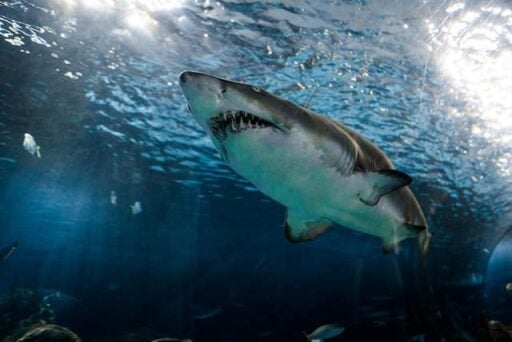
You must have seen them in a documentary or in public aquariums – these giant sea creatures can scare you to death in real life. Most sharks do not harm humans. But when they do, it is definitely not certain that you’ll evade their grip alive.
Among many other prominent states of the U.S that are attacked by sharks, Oregon has 30-31 reported incidents. Out of all of them, only one was fatal due to an unforeseen sea disaster, whereas in the rest, people escaped with minor injuries.
Read on to learn about shark attacks in Oregon and explore interesting facts regarding these creatures to avoid such attacks in the future.
Shark Features
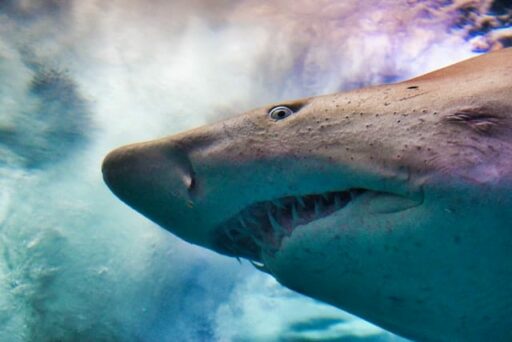
Before we dive into the shark-attacking strategies and the history of incidents, let us uncover some important characteristics of sharks.
Sharks are unique fish whose body is made of cartilage instead of bones.
These incredible species have eight senses: in addition to the basic human senses – hearing, sensing, seeing, smelling and touching – a shark has a unique sense like a lateral line, lorenzini, and pit organs that allow it to swim.
Sharks possess sharp eyesight. They have incredible night vision that lets them view colors in the dark and easily distinguish between colors.
Types of Sharks
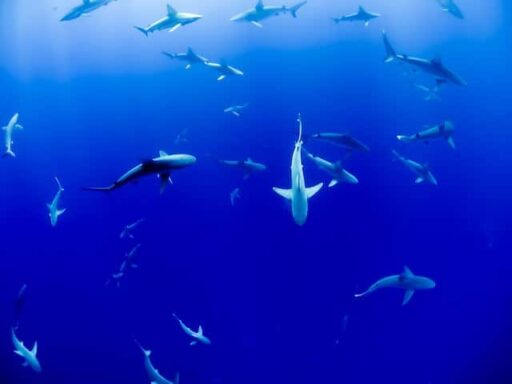
Sharks belong to the Elasmobranchii branch of fish with several slits on the sides of the head. The shark family contains more than 400 species, found in almost every ocean worldwide.
The most dangerous shark species include:
- Great white shark
- Bull shark
- Tiger shark
- Grey nurse shark
- Lemon shark
- Blue shark
- Sand tiger shark
- Hammerhead shark family
- Mako shark
What attracts sharks?
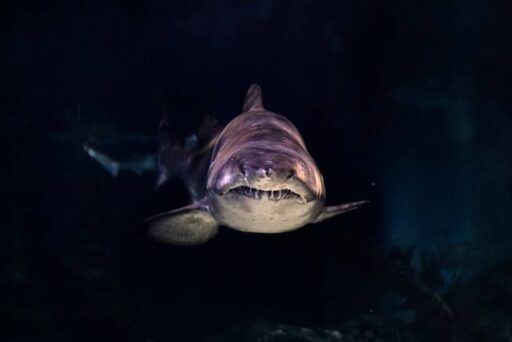
Scientists have been continuously researching what attracts sharks and eventually causes them to attack. No definite results can be drawn from the existing evidence, but some of the possible and common factors are listed:
Color: Some experiments show that sharks can distinguish colors in the dark. They are more attracted to colors like yellow, white, and silver. Therefore, many divers prefer clothing, fins, and tanks painted in dull colors for protection against shark attacks.
Sound: Sound seems to be a shark’s main cue for heading towards a direction, rather than sight or smell. Some irregular and inconsistent sounds attract sharks from vast distances, such as a swimmer in trouble or a wounded fish.
Blood: Blood alone may not invite sharks, but when combined with other uncommon factors, some creatures become more prone to attack.
Why Do Sharks Attack?
Despite their bloodthirsty nature, sharks rarely hunt humans. Sharks love to prey on sea lions, small fish, seals, etc. Some sharks are much more afraid of humans than we are of them.
When they see humans splashing in the seas, they get excited and try to investigate. Their attacks are a consequence of curiosity and confusion.
How To Avoid Shark Attacks?
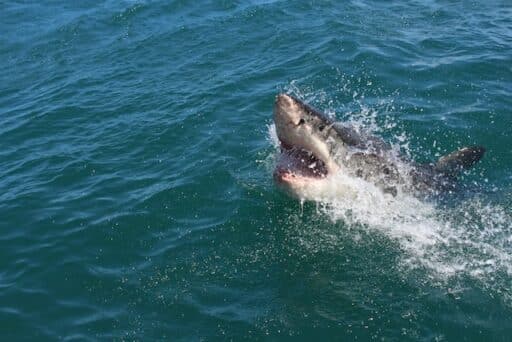
According to the statistics, on a yearly average, unprovoked shark bites on humans amount to 70 incidents globally, resulting in 5 deaths more or less. These global figures are much smaller compared to the millions of humans that dive into the water each day.
You have a higher probability of dying from a bee sting, a dog or snake bite, or a car crash than a shark bite. Despite the low chances of shark attacks, you must always minimize the risks. You can limit your interactions with the shark by following the below precautions:
- Buddy Up: Sharks tend to be more curious about solitary individuals. Travel with a partner whenever possible to reduce the chances of attracting their attention.
- Stick Close to Shore: Staying near the shoreline not only keeps you within reach of emergency assistance but also lowers the distance between you and a safe retreat.
- Mind Your Location: When in the water, exercise caution and stay vigilant in areas between sandbars or near steep drop-offs, as these are preferred hunting grounds for sharks.
- Time Matters: Avoid swimming during low light hours like dawn or dusk, when sharks are most active and on the prowl for food.
- Blood Awareness: While sharks don’t typically seek out the smell of human blood, it’s advisable to stay out of the water if you’re menstruating or have an open wound.
- Ditch the Bling: Shiny jewelry can reflect light in a way that resembles fish scales, potentially attracting sharks. Leave the bling behind.
- Read the Signs: Steer clear of areas dedicated to commercial fishing, those with signs of bait fish or feeding activity, and spots where diving seabirds are present—these are signs of fish, which could mean sharks nearby.
- Avoid Crowded Waters: Stay away from areas where water sports or recreational activities are taking place, as these can draw attention from marine predators.
- Dolphin Myth: Don’t assume that dolphins indicate the absence of sharks. Both species often share the same diet, so dolphin presence doesn’t guarantee safety.
- Blend In: Choose muted, non-contrasting clothing to avoid standing out in the water and catching a shark’s interest.
- Keep the Splash to a Minimum: Excessive splashing can attract sharks due to the noise it creates, mimicking the commotion of prey. Try to minimize splashing, especially in one spot.
- Smart Evacuation: If you become aware of a shark’s presence, exit the water calmly and slowly to avoid provoking or alarming it further. Safety should always be your top priority.
Types of Shark Bites
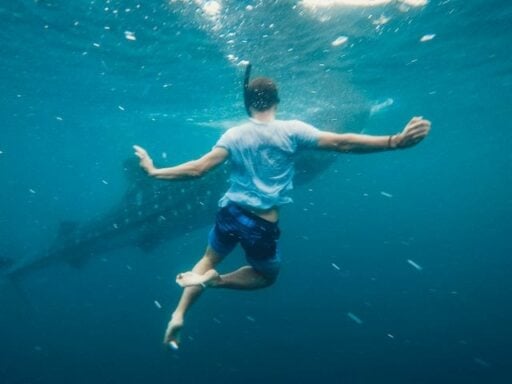
Here are the types of Shark bites that people experience:
- Provoked Bites: These bites take place when the humans initiate the interaction with the Sharks. When humans try to harass or touch sharks, they are bitten by them as a defense.
In some instances, sharks may bite to protect themselves when captured or unhooked from the net. Bites on fishers, humans trying to feed sharks, and bites occurring while detaching or releasing a shark from a fishing net are also categorized as provoked bites.
Most of these events include food, where a shark may bite a person by mistake while becoming aggressive in search of food.
- Unprovoked Bites: These bites occur on a live human in the shark’s natural habitat without any human initiation.
Unprovoked bites indicate the most genuine examples of shark behavior, the research’s most commonly used data category. This type of bite takes place in three forms:
- Hit-and-Run bites most often occur near beaches, where sharks try to attack a live fish in rising surf and moving currents. Sharks may mistake human motion for fish movements. In such cases, it is mostly legs or feet that are attacked, causing minor injuries and rarely causing deaths.
- Sneak bites happen in deeper waters where the victim hasn’t seen the shark before the interaction, resulting in serious injury or death.
- Bump-and-Bites take place when the shark moves around the victim and bumps him with its head or body before biting, causing serious injuries or sometimes death.
History of Shark Attacks in the U.S
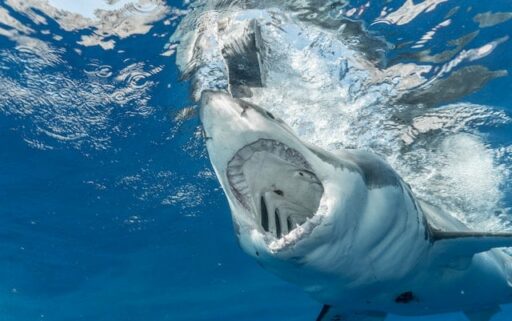
U.S. residents have been targeted by sharks on a large scale in the past. According to the statistics of the International Shark Attack File, U.S. citizens experience 44 unprovoked shark bites every year.
The four coastal states, including Alaska, Maryland, Connecticut, and New Hampshire, reported no shark attacks between 2000-2019.
Here’s a breakdown of the U.S. regions with the highest shark attacks.
| State | No. of Recorded Attacks |
| Florida | 896 |
| Hawaii | 192 |
| California | 132 |
| South Carolina | 111 |
| North Carolina | 76 |
| Texas | 44 |
| Oregon | 31 |
History of Shark Attacks in Oregon
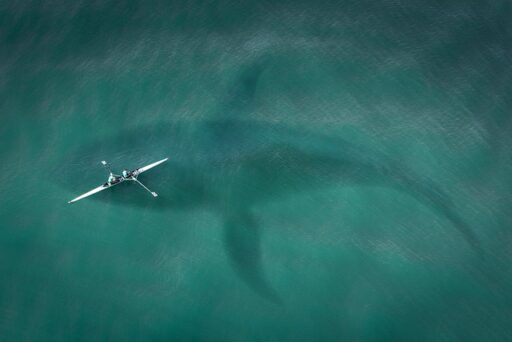
Oregon is ranked 7th among the ten states in the U.S. with regard to shark attacks.
Oregon has reported 31 attacks, out of which 30 were mild, and only one was fatal due to a sea disaster. A 62-year-old woman lost her life in 1975 after her boat sank and she got attacked by sharks. The remaining were unprovoked attacks where the victims suffered minor injuries.
| Date | Incident Type | Victim | Gender | Age | Injury | Specie | Location |
| Sep, 1974 | Unprovoked | Curt Brown | Male | 24 | None | White shark | Myers Creek Beach |
| July, 1975 | Unprovoked | Grace Conger | Female | 62 | Arms and legs wounded | Unknown | Unknown |
| Aug, 1976 | Unprovoked | Mike Shook | Male | 19 | None | White shark (13 feet) | Winchester Bay |
| Nov, 1979 | Unprovoked | Kenny Doudt | Male | 20 | Several major injuries | White shark (13 feet) | Haystack Rack |
| Oct, 1980 | Unprovoked | Christopher Cowan | Male | 29 | Thigh lacerated | White shark (13 to 16.5 feet) | Near Umpqua River |
| Aug, 1983 | Unprovoked | Randy Weldon | Male | Unknown | None | White Shark | Cape Kiwanda |
| Sep, 1984 | Unprovoked | Robert Rice | Male | 25 | Abrasion on right foot | White shark (10 to 16.5 feet) | Cape Kiwanda |
| Oct, 1988 | Unprovoked | Wyndham Kapan | Male | 21 | Femur fractured and leg bitten | White shark (18 to 20 feet) | Indian Beach |
| Feb, 1991 | Unprovoked | Tony Franciscone | Male | 38 | Calf lacerated | White shark (18 feet) | Neskowin |
| Mar, 1992 | Unprovoked | Mike Allman | Male | 21 | Left shoulder and side bitten | White shark (20 feet) | Winchester Bay |
| Sep, 1992 | Unprovoked | Jerad Brittain | Male | 20 | Minor injuries | White shark (13 to 16.5 feet) | Gold beach |
| Jan, 1993 | Unprovoked | William Weaver | Male | 29 | None | White shark (20 feet) | Bastendorf beach |
| Sep, 1994 | Unprovoked | Rob MacKenzie | Male | 43 | None | White shark (16.5 feet) | Short sand beach |
| Apr, 1998 | Unprovoked | John Forse | Male | 50 | Right thigh bitten | White shark (16.5 feet) | Gleneden Beach |
| Nov, 1998 | Unprovoked | Dale Inskeep | Male | 32 | None | White shark (16.5 to 20 feet) | Winchester Bay |
| Sep, 2002 | Unprovoked | Garry Turner | Male | 24 | Ankle lacerated | Shark (8 feet) | Cape Kiwanda |
| Sep, 2004 | Unprovoked | Seth Mead | Male | 26 | Leg injured | White shark | Gold beach |
| Dec, 2005 | Unprovoked | Brian Anderson | Male | 30 | Lacerated ankle and calf | White shark | Tillamook Head |
| Jul, 2006 | Unprovoked | Robert Martin | Male | 41 | Minor injury | Unknown | Ostwald State Park |
| Aug, 2006 | Unprovoked | Tom Larson | Male | 23 | Foot injuries | Unknown | Florence |
| Oct, 2006 | Unprovoked | Tony Perez | Male | 22 | None | White shark (16 feet) | Siletz River Mouth |
| Sep, 2010 | Unprovoked | David Lowden | Male | 29 | None | White shark | Winchester Bay |
| Oct, 2010 | Unprovoked | Seth Mead | Male | Unknown | None | Unknown | Florence |
| Oct, 2011 | Unprovoked | Doug Niblack | Male | Unknown | None | Shark (10 to 12 feet) | Seaside |
| Oct, 2011 | Unprovoked | Bobby Gumm | Male | 41 | None | White shark (15 feet) | Newport |
| Dec, 2011 | Unprovoked | Unknown | Female | Unknown | Minor injury to calf | Unknown | Seaside Cove |
| Jan, 2012 | Unprovoked | Steve Harnack | Male | 53 | None | White shark | Lincoln City |
| Nov, 2013 | Unprovoked | Andrew Gardiner | Male | 25 | None | White shark (10 feet) | Gleneden Beach |
| Oct, 2016 | Unprovoked | Jospeh Tanner | Male | 29 | Upper thigh and lower leg wounded | Unknown | Indian Beach |
| Mar, 2019 | Unprovoked | Nathan Hosteldt | Male | Unknown | None | Unknown | Cape Kiwanda |
| Dec, 2020 | Unprovoked | Cole Harrington | Male | 20 | Lower left leg and foot injured | Unknown | Seaside Cove |
Oregon Cities With the Highest Shark Attacks
In the period between 2000-2019, Oregon reported 13 bites – which translates to 0.65 bites each year in 20 years.
We have compiled the statistics of the 7 cities in Oregon with the highest shark attack incidents.
#1 Winchester Bay
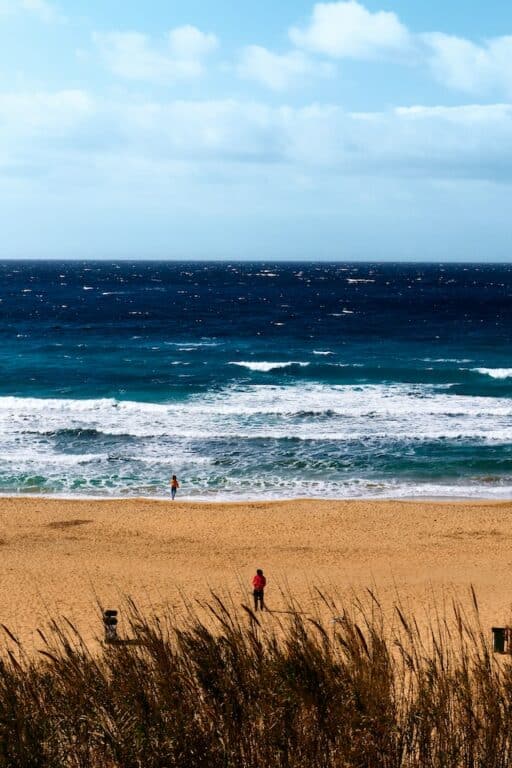
Winchester Bay, located in Douglas County, Oregon, reported 4 out of the 29 unprovoked shark attacks. All 4 of these attacks occurred while surfing, and none caused fatalities.
The first shark attack in Winchester Bay dates back to August 24, 1976, when an almost 15-foot white shark attacked a 19-year-old man. The shark merely bit Mike Shook’s board, so he suffered no injuries.
Another person, Mike Allman, was attacked by a white shark with a length between 20-23 feet on March 18, 1992. This 18-year-old boy suffered injuries on his left shoulder and side, and his board was also broken by the shark.
In a third incident, a white shark attacked a 32-year-old, Dale Inskeep, on November 5, 1998, in Winchester Bay. He suffered no injuries from this animal, with measured a length of 16.5 to 20 feet.
The last shark attack reported in this region occurred on September 27, 2010, involving David Lowden, who was luckily not injured.
#2 Lincoln County
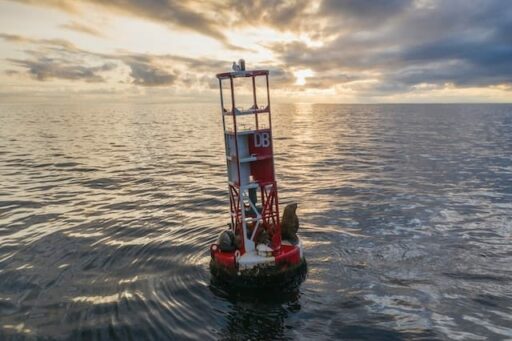
Lincoln County is a place where many shark attacks have occurred. The first incident took place on October 31, 2006, at the Siletz River mouth when an almost 16-foot-long shark attacked a 22-year-old man.
Tony Perez was attacked right before sunset, but he luckily didn’t suffer any injuries.
Five years later, a 15-feet long white shark attacked a person in Newport City. Fortunately, the 41-year-old man, Bobby Gumm, didn’t suffer any injuries.
In the second incident, Steve Harnack, a 53-year-old man, was attacked by a white shark on January 13, 2012. Only his surfboard got damaged in this case.
The last shark attack in Lincoln County took place on November 22, 2013, at Gleneden Beach. A 10-foot-long white shark attacked Andrew Gardiner, and yet again, the surfboard was the only causality.
#3 Cape Kiwanda State Natural Area

Cape Kiwanda State Natural Area is a part of Oregon located in Pacific City. Randy Weldon was the first person attacked by a white shark in Cape Kiwanda. The incident happened on August 20, 1983, while Randy was surfing, and he luckily suffered no injuries.
On September 30, 1984, Robert Rice was attacked by a 10-16.5 foot-long white shark. Robert was 25 years old when he was attacked and suffered an abrasion on his right foot. The shark also broke his surfboard.
Another person, Gary Turner, was attacked by an 8-foot-long shark on September 21, 2002, at Cape Kiwanda. The shark lacerated the ankle of this 24-year-old victim.
In a recent incident, a shark attacked Nathan Holstedt on March 5, 2019. His board was bitten and dented, but luckily he didn’t suffer any injuries on his person.
#4 Seaside
Seaside is a City located in Clatsop County with 3 shark attack in its records. The first attack in the region happened on October 10, 2011, when a 10-12 feet long shark attacked Doug Niblack. Thankfully he didn’t suffer any injuries.
The second attack occurred on December 6, 2011, when a woman surfer was attacked by a shark and suffered a minor injury to her calf.
During the last attack in Oregon, Cole Herrington, a 20-year-old, was bitten while surfing on December 6, 2020. He suffered injuries to his left leg and foot.
#5 Indian Beach
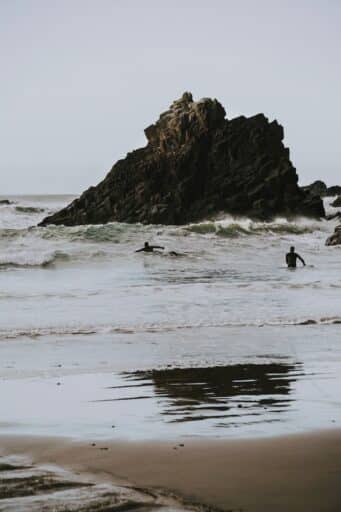
Indian Beach is located in Ecola State Park, with two shark attacks recorded. In the first incident, Wyndham Kapan was attacked by a white shark that was 18 to 20 feet long.
The 21-year-old surfer was sitting on his board when the shark attacked, wounding his leg and fracturing his femur in an unprovoked attack.
Another event happened on October 10, 2016, in which Joseph Tanner suffered injuries to his lower leg and upper thigh while surfing.
#6 Gleneden Beach
Gleneden Beach, located in Lincoln County, has reported two similar unprovoked attacks. John Forse was bitten by a 16.5 feet long white shark at Gleneden Beach. The 50-year-old surfer was attacked on April 21, 1998, when the shark bit his right thigh.
In a second incident, Andre Gardiner was attacked on November 22, 2013, by a 10-foot-long shark. This 25-year-old surfer didn’t suffer any wounds.
#7 Gold Beach
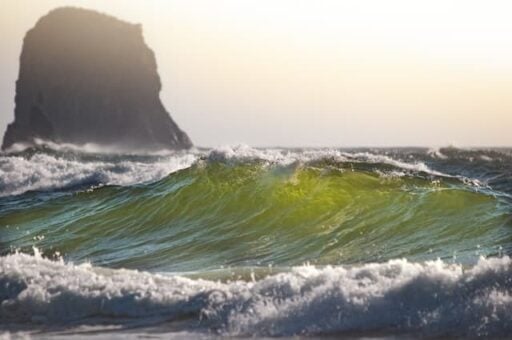
Gold Beach is a city in Curry County with two official shark attacks. A surfer, 20-year-old Jerald Brittain, was attacked by a white shark measuring 13 to 16.5 feet on September 13, 1992. He suffered minor bruisesfollowing this unprovoked attack.
Another incident that took place at Gold Beach involved a white shark that bit the leg of a surfer. This unprovoked attack happened on September 20, 2004, and was not fatal.
Read more about 7 Oregon Areas With Most Shark Attacks.
The Bottom Line on Shark Attacks in Oregon
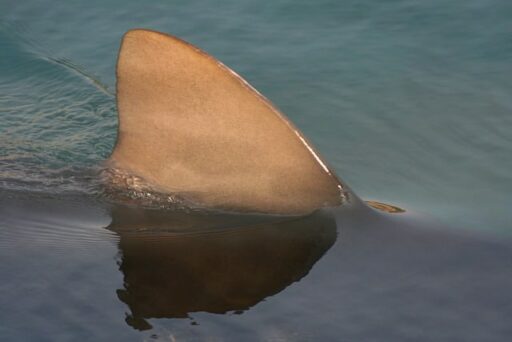
Sharks attack humans when they are hungry, harassed, or feel unsafe. Most shark interactions with humans occur because of mistaken identity. Kicking or thrashing vibrations made by humans in the water often resemble fish movements, and it acquires the shark’s attention.
Oregon state records both non-fatal and unprovoked incidents. The majority of attacks involve surfers who suffer minor to no injuries. Reportedly, male surfers are attacked more frequently than female surfers.
Shark attacks can be fatal, but they are less frequent than other aquatic accidents. Surfers, divers, or other people entering the water, in general, must practice precautions and keep safety protocol in consideration.
Thank you for reading this article! Shark attacks are on the rise throughout the nation, if you’re still curious to know more about U.S.-shark attacks, read our post about Shark Attacks in North Carolina.
- Man Saves Pelican Choking on Fish at the Last Second - April 26, 2024
- Brave Monkey Saves Kitten Abandoned in a Well - April 25, 2024
- Octopus Stuck to Diver’s Back and Won’t Come Off - April 25, 2024


